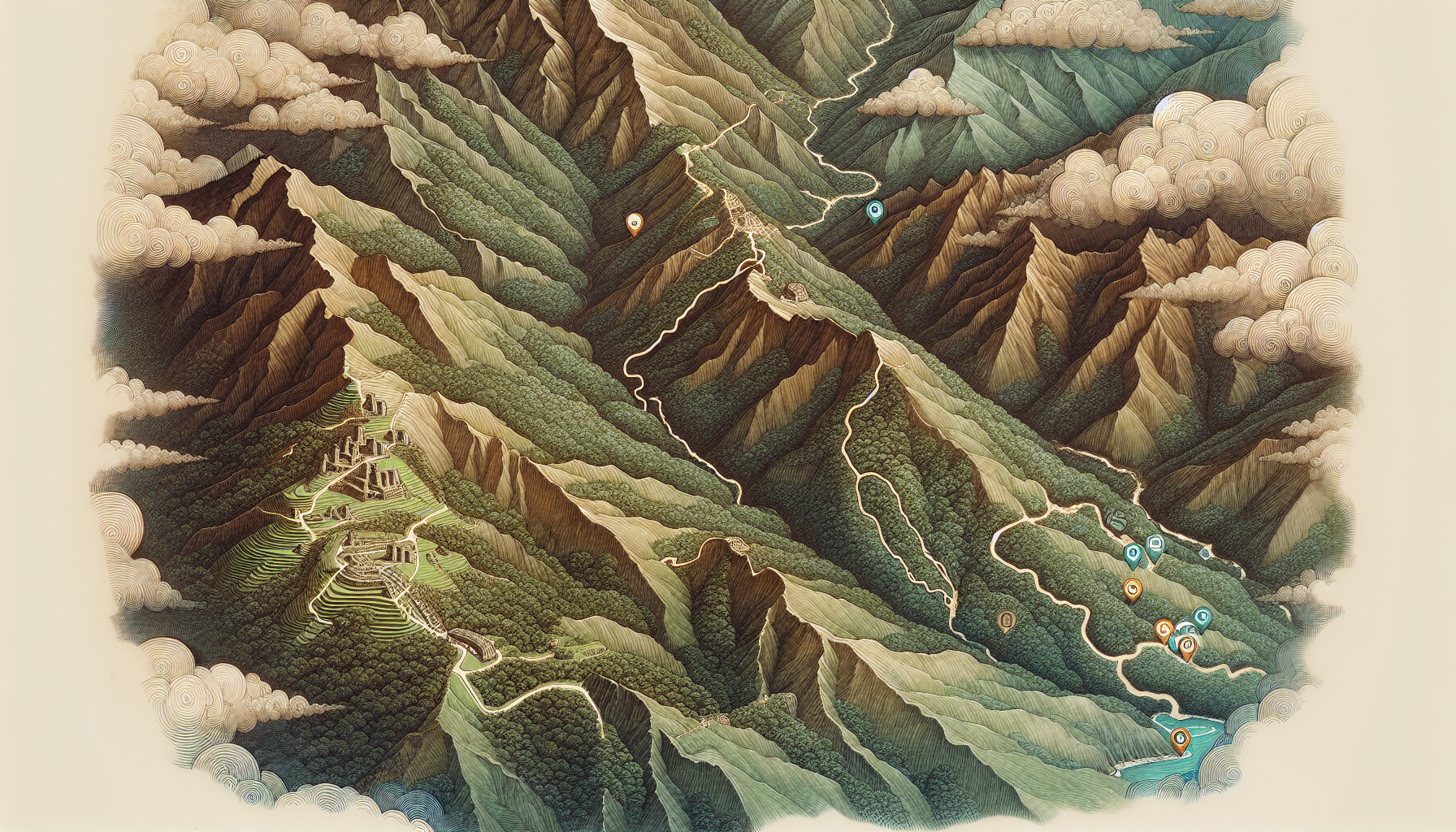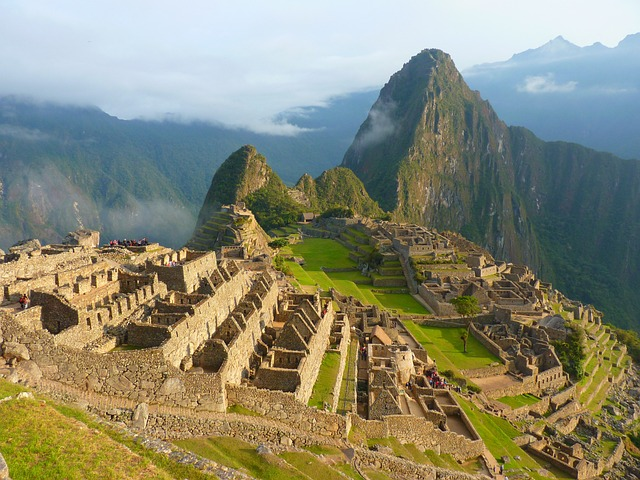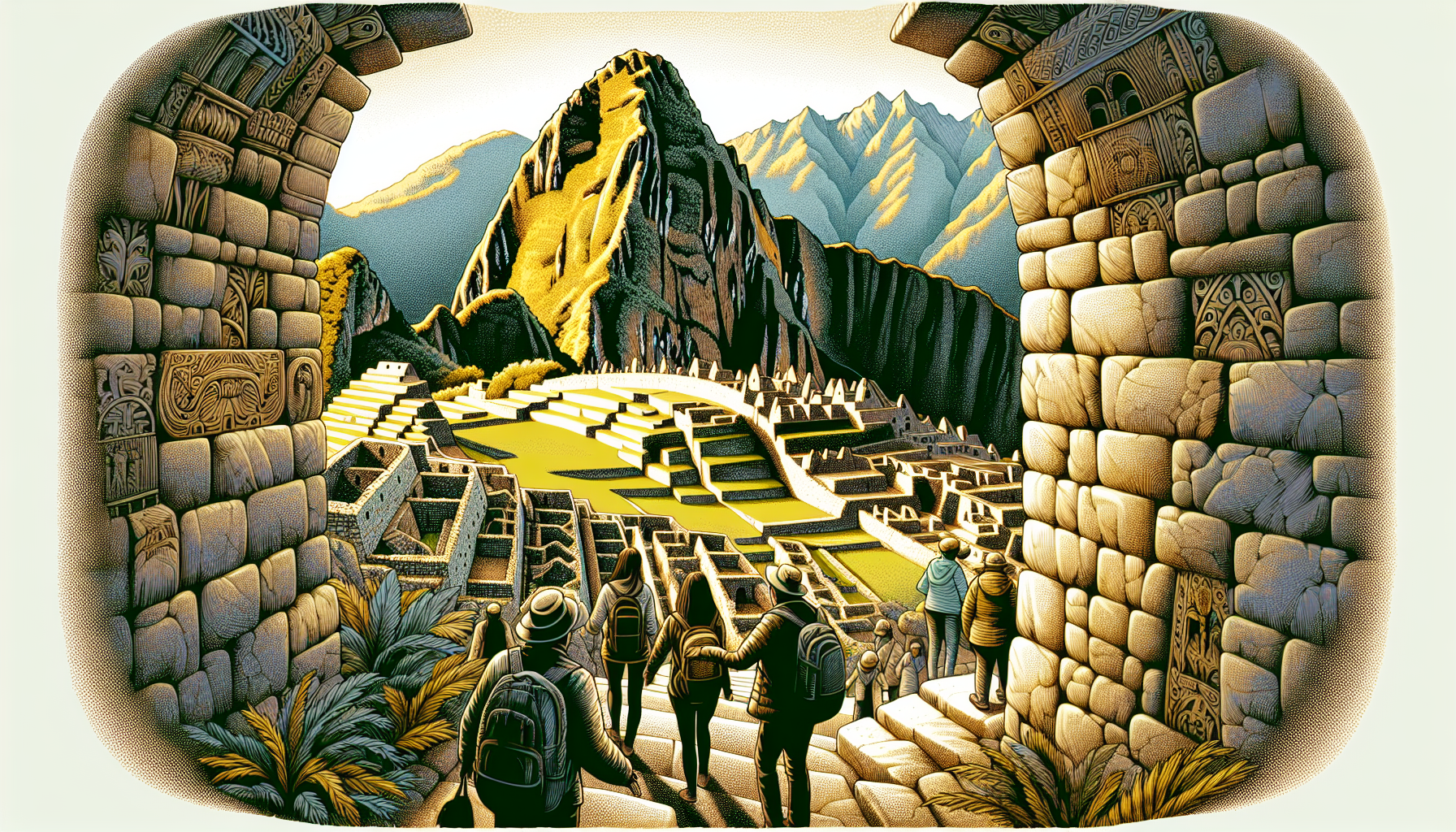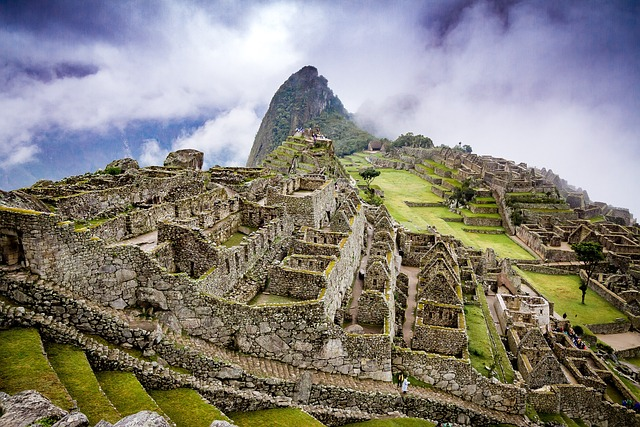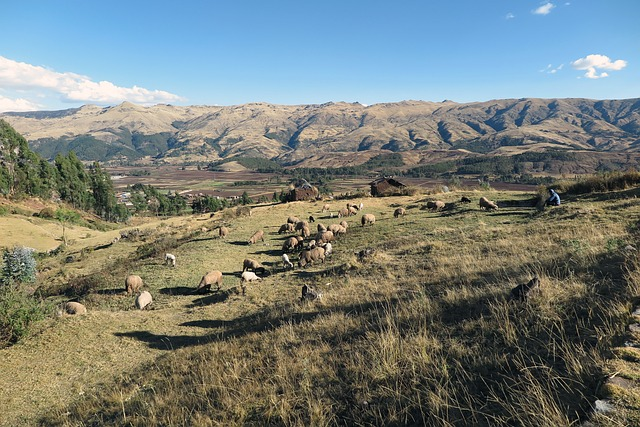- Home
- /
- Peru
- /
- Destinations
- /
- Ultimate Guide to Visit...
Explore the Wonders of Machu Picchu: A Comprehensive Guide
Planning to visit Machu Picchu? In this guide, we’ll cover everything you need to know to ensure your journey to this ancient Inca sanctuary is both seamless and awe-inspiring. From selecting the perfect time to go, securing your tickets, and deciding between guided or solo travel, to what to pack and how to protect your health at high altitudes – consider this your essential toolkit for a visit that’s as majestic as the destination itself.
Key Takeaways
- Strategic planning and adherence to health and safety protocols, including mask and vaccination requirements, are crucial for a successful visit to Machu Picchu.
- Visitors must obtain permits in advance with different ticket options available, and it’s advisable to book several months ahead due to visitor limits, especially during high season.
- Accommodations range from luxury hotels to hostels in Aguas Calientes and Cusco, and transportation options include train services from Cusco or a walk from Hidroeléctrica, along with international travel arrangements to Peru.
Planning Your Trip to Machu Picchu
Setting off on a Peruvian adventure to Machu Picchu, the “Old Peak” in Quechua, requires careful planning. This ancient Inca city, perched above the Urubamba River valley, is a place where history and natural beauty converge in a stunning display. But, how do you navigate the logistics of such a journey? From deciding the best time to visit to securing the necessary permits, every step of your trip needs careful consideration.
Keeping abreast of the latest health and safety protocols is equally important. As of 2024, mask and vaccination requirements are still in place for visiting Machu Picchu, making it imperative to ensure compliance for a successful and unforgettable visit. After all, the last thing you want is any unexpected hiccups on your journey to this marvel of the ancient world.
Best Time to Visit
Deciding when to embark on your adventure to Machu Picchu can significantly influence your experience. While the ancient ruins are a sight to behold all year round, certain months offer a more pleasant climate and fewer crowds. So, when is the best time to pack your bags for this breathtaking destination?
Peru’s summer season, from December to March, is warm but marked by regular rainfall, which can make the trails and ruins slippery and less visible. Conversely, the winter season, from May to September, sees drier weather conditions and an influx of tourists. Striking a balance between favorable weather and manageable crowds, May and September are considered the ideal months to visit Machu Picchu.
Obtaining Permits
Now that you’ve decided when to visit Machu Picchu, the next step is obtaining the necessary permits. And, remember, tickets to this world heritage site are not sold at the entrance and must be procured in advance. But, how do you go about securing these permits?
There are different types of tickets available, each with its own cost and access times. You can opt for a Machu Picchu only ticket, or choose a combination ticket that includes entry to either Huayna Picchu or Machu Picchu Mountain. It’s important to print out your tickets and bring them along with your passport to the entrance, as digital copies are not accepted.
With a daily limit on the number of visitors, especially during the high season, it’s advisable to book your tickets several months in advance. If you’re planning to hike the Inca Trail, bear in mind that permits are limited and can only be purchased through an authorized tour operator.
Guided Tours vs. Independent Travel
With your permits in place, it’s time to choose between a guided tour and independent travel. Both options have their own set of pros and cons, and the choice ultimately depends on your own preferences and comfort levels. So, how do you decide?
Guided tours offer a structured experience with arranged accommodations, meals, and professional guidance. Opting for a guided trek, such as the Inca Trail, Lares, or Salkantay, can take the hassle out of planning and ensure a smooth travel experience. However, these tours may offer less flexibility in terms of itinerary and pace and typically have a higher cost compared to independent travel.
On the other hand, independent travel allows for a more flexible and potentially less costly experience, but requires personal planning and navigation. Whatever you choose, rest assured that the journey to this ancient Inca city will be filled with unforgettable sights and experiences.
Exploring the Inca Citadel: What to See and Do
Once your plans are in place, it’s time to delve into the heart of your Peruvian adventure: exploring the Inca citadel of Machu Picchu. From its iconic structures to exhilarating hiking options, each moment spent at this ancient site promises to leave you in awe. But, where should you begin your exploration?
Machu Picchu sits divided into key areas that include the Intihuatana, the Central Plaza, and viewpoints like the Inti Punku (Sun Gate) and the Inca Drawbridge. As you wander through these historic sections, you’ll get a glimpse into the scientific ingenuity of the Inca civilization and the daily life of its inhabitants. Prepare to be amazed by panoramic views of Machu Picchu from the Sun Gate and the serene beauty of the Inca citadel contrasted with the lush vegetation of the cloud forest from the Inca Drawbridge.
Average Temperatures and Rainfall
| Jan | Feb | Mar | Apr | May | Jun | Jul | Aug | Sep | Oct | Nov | Dec | |
|---|---|---|---|---|---|---|---|---|---|---|---|---|
| Av. High (F) | 66 | 66 | 67 | 68 | 68 | 67 | 67 | 68 | 68 | 70 | 69 | 68 |
| Av. High (C) | 19 | 19 | 19 | 20 | 20 | 19 | 19 | 20 | 20 | 21 | 20 | 20 |
| Av. Low (F) | 44 | 44 | 44 | 41 | 37 | 34 | 34 | 34 | 39 | 42 | 43 | 43 |
| Av. Low (C) | 7 | 7 | 7 | 5 | 3 | 1 | 1 | 1 | 4 | 6 | 6 | 6 |
| Wet Days | 16 | 12 | 10 | 7 | 4 | 3 | 2 | 2 | 6 | 8 | 10 | 14 |
Iconic Structures
As you step into the ancient Inca city, you’ll be greeted by iconic structures that stand as a testament to the architectural prowess of the Incas. Machu Picchu was built with each structure having its own unique story, adding to the allure of the ancient citadel and providing a glimpse into the past.
Perhaps the most notable among these Inca ruins is the Temple of the Sun and the Royal Tomb, which showcase the remarkable craftsmanship of the Incas. The Principal Temple, with its three-sided structure used for ceremonial offerings, is another marvel of Inca architecture. Don’t miss the House of the High Priest and the Temple of the Three Windows, considered some of Machu Picchu’s finest Inca structures.
Finally, the Temple of the Condor, with its large carving representative of the bird, gives an insight into the Inca’s sacrificial rituals.
Hiking Options
For the adventurous souls, Machu Picchu offers a variety of hiking options that combine history, culture, and natural beauty. Whether you choose:
- the classic Inca Trail
- the Salkantay Trek
- the Lares Trek
- the Choquequirao Trek
- or decide to venture off the beaten path
The journey promises to be as rewarding as the destination itself.
The iconic Huayna Picchu peak, often seen in photographs behind the main site of Machu Picchu, offers a challenging trek leading to unique sites like the Temple of the Moon. For a variety of experiences, consider the classic Inca Trail through cloud forests, the Quarry Trail with Andean views, or the more remote and challenging Choquequirao trek. Each route offers a unique perspective of the region’s landscape and a chance to immerse yourself in its serene beauty.
Tips for an Unforgettable Experience
To ensure that your visit to Machu Picchu is not just memorable but also comfortable, we’ve gathered some useful tips. From the ideal starting point for hikes to packing essentials, these suggestions aim to enhance your experience at this breathtaking destination.
The Hut of the Caretaker of the Funerary Rock offers dramatic views of Machu Picchu and serves as an ideal starting point for hikes. To keep your energy levels up and stay hydrated during your exploration, pack:
- Lightweight, non-perishable snacks like granola bars
- A reusable water bottle
- A hydration bladder for easy drinking during hikes, ensuring you have enough capacity for the journey, as Machu Picchu served its purpose in ancient times.
Navigating the Journey: Transportation and Accommodations
Once you’ve planned your itinerary and are ready to embark on your journey, it’s time to navigate the logistics of transportation and accommodations. From getting to Peru to finding the perfect place to stay, we’ve got you covered.
The journey from Cusco to Aguas Calientes, the gateway to Machu Picchu, can be made on a scenic train ride that follows the course of the Urubamba River in the Sacred Valley, surrounded by dramatic canyon walls. Travelers can choose between Peru Rail and Inca Rail, which both offer a variety of train services with different amenities, including options with:
- Panoramic windows for enhanced views of the landscape
- Comfortable seating
- Onboard dining options
- Wi-Fi access
Getting to Peru
Before embarking on your Peruvian adventure, it’s important to plan your route to Peru. Whether you prefer the convenience of air travel or the scenic landscapes of a bus ride, we’ve got you covered.
Tourists must follow these steps to reach Machu Picchu:
- Fly into Lima.
- Take a connecting flight from Lima to Cusco.
- The flight from Lima to Cusco is about an hour long.
- Alternatively, you can take an extensive bus ride, which can take 25 hours or more.
- Although Lima is at sea level and acclimation is not necessary, visitors have the option to spend time there before continuing on to the higher altitudes of Cusco.
Traveling from Cusco to Aguas Calientes
Getting from Cusco to Aguas Calientes, the base town for Machu Picchu, is an adventure in itself. The journey is not just about reaching the destination, but also about soaking in the breathtaking landscapes along the way.
Travelers to Aguas Calientes have multiple options, ranging from the luxurious Belmond Hiram Bingham train to more economical choices such as Peru Rail’s Expedition service or the Vistadome. Trains to Machu Picchu depart from Poroy and Ollantaytambo train stations.
For those seeking a more adventurous route, the Hidroeléctrica option includes a group shuttle followed by a walking trail. But remember, walking the entire route along the train tracks poses safety concerns due to train tunnels and track guards.
Accommodations
After a day of exploration and adventure, a comfortable place to rest is crucial. Whether you prefer the luxury of a high-end hotel or the affordability of a hostel, Aguas Calientes and Cusco have something to suit every traveler’s needs.
In Aguas Calientes, luxury accommodations include the Inkaterra Machu Picchu Pueblo and the Sumaq Machu Picchu Hotel, providing top-notch amenities and services. But worry not if you’re traveling on a budget, as Aguas Calientes also offers affordable hostels that provide a comfortable stay without breaking the bank.
Similarly, in Cusco, you’ll find a diverse range of hotel options, including boutique hotels, colonial mansions, and large, full-service hotels, catering to every budget and preference.
Beyond Machu Picchu: Exploring the Sacred Valley and Surrounding Areas
While Machu Picchu is undoubtedly the crown jewel of any Peruvian adventure, the heritage and beauty of the surrounding regions offer valuable experiences beyond the majestic Inca citadel. From exploring the Sacred Valley to immersing yourself in Cusco’s rich history and culture, there’s a wealth of experiences waiting to be discovered.
The Sacred Valley of Peru, with its array of attractions set against a backdrop of Andean scenery, historic market towns, and ancient trekking routes, provides a perfect extension to your Machu Picchu adventure. Similarly, the city of Cusco, often referred to as a “lost city” due to its rich history, is one of the oldest continuously inhabited cities in the Western Hemisphere and the former capital of the Inca Empire, offering a rich tapestry of history and culture to explore.
Sacred Valley Highlights
A visit to the Sacred Valley unfolds a panorama of attractions, each with its own unique charm. From bustling markets to ancient Incan ruins, the region offers a blend of the region’s history with its modern-day vibrancy.
Pisac, celebrated for its Sunday bazaar and ancient Incan ruins, is a must-visit. Another highlight is Urubamba, known for its arts market and craft workshops. Meanwhile, Ollantaytambo, with its massive terraces and fortress ruins, is a testament to the architectural prowess of the Incas. Each of these destinations adds a distinct flavor to your Peruvian journey, making your trip all the more enriching.
Cusco’s Rich History and Culture
Cusco, the gateway to Machu Picchu, is a city steeped in history and culture. The city’s well-preserved early stone architecture, vibrant markets, and colonial houses offer a captivating blend of the ancient and the contemporary. As a UNESCO World Heritage Site, Machu Picchu is a must-visit destination for travelers exploring this region.
As you walk through the city streets, you’ll come across notable attractions such as Tambomachay, the Kenco amphitheatre, and the Puca Pucara fortress, each echoing the city’s rich heritage. Don’t miss out on immersing yourself in Peruvian music, cuisine, and the city’s central market, where you can sample local delicacies and shop for unique souvenirs.
Off-the-Beaten-Path Experiences
For those seeking a deeper connection with the region, there are off-the-beaten-path experiences that offer a unique perspective of the local culture and landscape. From community-based tourism to unexplored historical sites, these experiences can add a new dimension to your Peruvian adventure.
With programs like Intrepid Travel, you can dive deep into local traditions and beliefs, interact with locals, and experience the region beyond the tourist trail in South America, particularly in western South America. The Lamay and Amaru communities, for instance, offer immersive experiences in traditional Andean crafts and farming, giving you a taste of authentic local life. Also, consider exploring lesser-known historical sites like Huchuy Cusco, or try out alternative trekking routes like the Salkantay Trail for a different perspective on the region’s natural beauty.
Preparing for Your Adventure: Packing Tips and Health Considerations
As you gear up for your journey to Machu Picchu, it’s important to be well-prepared. From packing the right gear to taking care of your health, each detail contributes to a comfortable and memorable journey.
Adaptable clothing is crucial to cope with the changing weather conditions common in high-altitude regions like Machu Picchu. Some key considerations to ensure health and comfort during the trek include:
- Securing your belongings
- Maintaining hydration
- Protecting from intense sun exposure
- Packing necessary medications, including those for altitude sickness, especially when visiting high-altitude areas.
Packing Essentials
When it comes to packing for your Machu Picchu adventure, a few essentials can make a big difference to your comfort and convenience. From rain covers to hydration solutions, here are a few things you should definitely include in your packing list.
A rain cover for your backpack is essential to protect your belongings from the Andes’ unpredictable weather conditions. Hydration is also crucial, so make sure you carry a hydration bladder or water bottle, along with water purification tablets. Trekking poles can provide stability on the trail, but remember to store them before entering Machu Picchu as they are not permitted inside.
A neck cover can shield you from intense sun exposure at high elevations, such as in the Andes mountains, and help regulate your body temperature. And, of course, packing light is always a good idea, especially if you plan to walk to Hidroeléctrica.
High Altitude Health Tips
Traveling to high-altitude regions like Machu Picchu can pose certain health challenges, particularly altitude sickness. Here are some crucial tips to help you acclimatize and stay healthy during your visit.
Upon arriving at the high-altitude city of Cusco, it’s advisable to:
- Descend to the town of Aguas Calientes at a lower elevation to allow your body time to acclimatize before visiting Machu Picchu.
- Acetazolamide can be prescribed to aid acclimatization and help prevent acute mountain sickness, but it’s always best to follow a physician’s advice.
- Remember to maintain hydration by drinking water and replenishing minerals with electrolyte powders.
- Avoid excessive consumption of alcohol.
By employing preventative tactics such as pacing your hike carefully and applying sunscreen, you can ensure a healthy and enjoyable adventure.
Summary
Machu Picchu, with its stunning Inca ruins and breathtaking vistas, offers an unforgettable journey into the past. Planning your trip carefully, exploring the iconic structures and the surrounding Sacred Valley, and preparing adequately for the high-altitude adventure can ensure a memorable experience. So, pack your bags, lace up your hiking boots, and get ready to embark on a journey of a lifetime to this ancient wonder of the world.
Frequently Asked Questions
How do tourists get up to Machu Picchu?
Most tourists reach Machu Picchu by train from Cuzco or Ollantaytambo, or by trekking the iconic Inca Trail. From the town of Aguas Calientes, a short bus ride or steep hike takes them up to the citadel.
What is the average cost of a trip to Machu Picchu?
The average budget for a trip to Machu Picchu is around $500 to $1000, depending on travel style and duration.
What is the best month to go to Machu Picchu?
The best month to go to Machu Picchu is during the dry season from April to October, with the peak tourist season being June, July, and August when the weather is at its best.
How many days do you need to visit Machu Picchu?
For most people, one day is enough to visit Machu Picchu and explore the site. However, spending an extra day can allow for a more relaxed and thorough exploration of the area. It is recommended to spend two days at Machu Picchu for a full appreciation of the site.
How can I purchase tickets for Machu Picchu?
To purchase tickets for Machu Picchu, you must acquire them in advance through the official government website or authorized travel agencies. Plan ahead to secure your visit.

